Five artists show Andy Extance why science and art need not be mutually exclusive
‘Where the world ceases to be the stage for personal hopes and desires, where we, as free beings, behold it in wonder, to question and to contemplate, there we enter the realm of art and science. If we trace out what we behold and experience through the language of logic, we are doing science; if we show it in forms whose interrelationships are not accessible to our conscious thought but are intuitively recognised as meaningful, we are doing art. Common to both is the devotion to something beyond the personal, removed from the arbitrary.’
As these noble words – attributed to Albert Einstein – suggest, art and science share extraordinary ambitions. In such traditional descriptions, when scientists produce images they want to communicate information directly and efficiently, making them artless in the sense of avoiding deceit. Artists might equally seek to convey truth, creating work designed specifically to evoke resonances concerning their personal or ideological agendas.
These ideas make the two pursuits seem like family members at cross-purposes, living together but separately in the universe, when in fact they’ve long been much closer. Just as science delivers means and materials for artists, art can put science itself under a microscope or a spotlight. Scientists typically achieve success through deep knowledge of one narrow area. Artists’ comparatively shallow but broad interests can bring discoveries to a wider audience, reveal their unknowns and provide important perspectives on where they fit in. Today that’s increasingly well-recognised, with research funding organisations regularly backing artists to help them bring the two cultures closer than ever. And, as five artists reveal to Chemistry World, combining art and science can reach beyond raw wonder to explore a more diverse set of emotions.
Seizing attention
In search of a ‘universal surface’ to coat objects, Roger Hiorns turned to copper sulfate crystals. ‘I wanted a process that was aesthetic but didn’t require me to be fully present,’ the artist, based in London, UK, says. Hiorns initially coated select objects by depositing them in hot, supersaturated, copper sulfate solutions. From model cathedrals, which like crystals grow gradually outwards from their cores, he eventually progressed to encasing an entire derelict council flat in a shimmering blue shell. That work, Seizure, would contribute to his 2009 Turner Prize nomination.
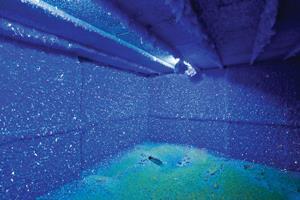
‘With Seizure, we scaled up into an industrial process,’ Hiorns explains. University of Manchester crystallographer Roger Davey helped Hiorns work out an equation for the project. ‘We could then apply that to how much volume we might need for a certain square footage of crystallisation,’ Hiorns says. ‘It’s also very nice to have an artwork that has its own equation.’ He and his collaborators completely submerged the flat using a peristaltic pump found more commonly on oil rigs. ‘We made 80,000 litres of solution and pumped it into the bedsit, like you would fill a swimming pool, and sat back and let the crystallisation happen over a month and a half.’
Although creating an artwork in a derelict flat put Seizure in danger from demolition, the preparation needed to support the crystals’ weight rescued it. ‘The crystallisation and reinforcement of the bedsit allowed us to peel the building around it apart and slide it onto a frame in one piece,’ Hiorns said. ‘We could pick the whole thing up and put it on a truck and take it.’ The artwork can now be seen at the Yorkshire Sculpture Park in the UK.
The copper sulfate’s fascinating texture focuses viewers on the flat, Hiorns underlines. ‘It’s part of a social system that I was drawing attention to, part of an ideology that became problematic and contaminated. This was a small and mean-spirited space that someone had to live in.’
Hiorns is now set to create a wholly new material with another Roger Hiorns, a chemist who works with long chain polymers and fullerenes at the University of Pau in France. ‘We wanted to collaborate because we had an uncanny relationship with our name,’ he explains. ‘We’re in discussion on what might be the aesthetic process that I can help him with. We might come up with a material called Hiorns or something. It might be useful, or it might be totally not useful.’
Design for life

‘Interaction design’ diverted Alexandra Daisy Ginsberg away from a career in architecture towards exploring links between design, science and people. Though the term traditionally refers to shaping digital products for people’s use, Anthony Dunne at London’s Royal College of Art brings it to everything from nanotech to biotech. ‘I got to the RCA and learned about synthetic biology and decided I was going to push this subject as far as possible to see what design could be in this completely new and unfamiliar space,’ Ginsberg tells Chemistry World.
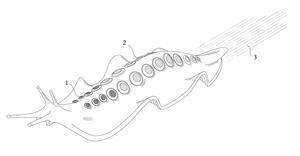
In a 2009 project called E. chromi, she worked with seven undergraduates at the University of Cambridge, UK, who genetically engineered bacteria to produce pigments. Ginsberg and fellow designer James King developed a hypothetical timeline of their uses and abuses, applications and implications. By 2039, for example, a probiotic drink containing E. chromi might warn of disease through your faeces’ colour. To provoke a response to what synthetic biology could bring, Ginsberg and King therefore made a briefcase of coloured faeces.
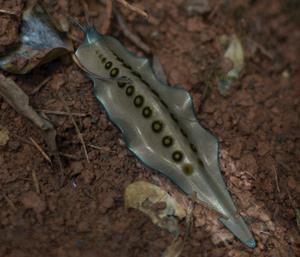
Ginsberg was also design fellow on Synthetic aesthetics, a project led by Drew Endy of Stanford University in the US and Alistair Elfick and Jane Calvert of the UK’s University of Edinburgh. Funded by the US National Science Foundation (NSF) and the UK Engineering and Physical Sciences Research Council, scientists and artists worked together, thinking about what designing life means. A book discussing the project’s results came out in April 2014. And in an exhibition called Designing for the sixth extinction, Ginsberg investigates synthetic biology’s potential impact on biodiversity and conservation. She designs fictional engineered beings, like slugs that deacidify polluted ground, created with extra unnatural DNA bases so its genes can’t transfer to natural life.
With concepts like gut bacteria that detect disease and microbes with expanded DNA becoming real science this year, Ginsberg’s efforts could scarcely be timelier. But her creatures aren’t intended to look or become real, a message she’s not sure came across. ‘I got to design animals, which was great fun, but the questions I’m asking are meant earnestly,’ she says. ‘It’s the same as a briefcase full of coloured poo – there’s a playful element, but it got people talking. Futuristic organisms are a way of looking into what we make now. The world has limited resources and the design industry is very focussed on making “stuff”. How do we transform that? Coming into a discipline where the rules aren’t written yet there’s an opportunity to define the role that design normally takes.’
Quantum art
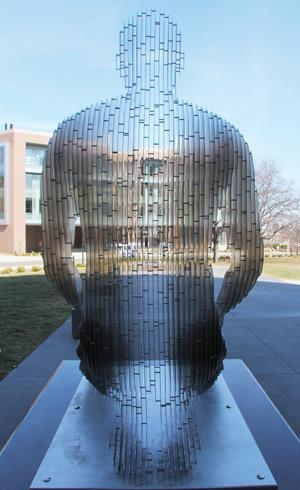
In 1999, Julian Voss-Andreae was part of a team that showed C60 molecules could exhibit wave-particle duality, making buckyballs the most massive particles that wave behaviour has been observed for. For the artist, based in Portland, Oregon in the US, working in the University of Vienna lab of Wolf Prize winning Austrian physicist Anton Zeilinger was ‘incredible’.
‘That first-hand experience of the deeply puzzling underlying nature of reality has informed my path since,’ Voss-Andreae says. ‘It feels to me that I have received a sense of an underlying quantum world and I want to apply it to people, pull it from physics into our collective mind and create metaphors for it, because I feel there is so much we need to learn from it. Scientists first, and slowly everyone else, are forced to see that we cannot separate the observer from the observed, and that our intuition of a reality «out there‰, with definite properties regardless of whether there is anyone there to observe it, is not tenable.’
To highlight this, Voss-Andreae has created a series of quantum people, sculpted from thin parallel steel sheets that appear and almost disappear depending upon your viewpoint. Having made a reclining woman who becomes nearly invisible when you look into her eyes in 2012, he’s built on the idea for his latest work, Spannungsfeld. ‘I created two figures, a man and a woman, looking at each other, and they disappear along the line of their sight, so they never see each other,’ Voss-Andreae says. ‘The German title of the installation, which literally means “tension field”, originated in physics but it’s used in contemporary German almost exclusively in a metaphorical sense, implying a dynamic tension, often between polar opposites, that permeates everything in its vicinity.’
Voss-Andreae also creates sculptures inspired by protein structures, and is now working on an NSF-funded collaboration using DNA as a building material for nanoscale machines. ‘We started this last year and at this point I am learning a lot about DNA origami structures,’ he says. ‘I am finding ways to represent the systems we are interested in as real objects or in the computer. The expectation is that my expertise contributes to the research and that the research in turn inspires novel artworks in the future of the collaboration.’
Visceral impact
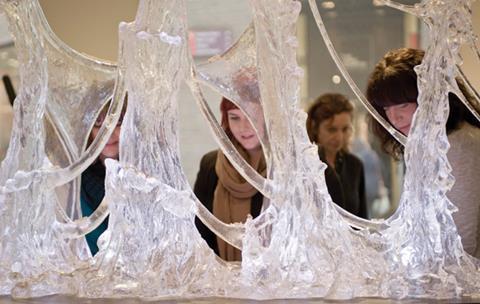
At age seven, Gina Czarnecki, the daughter of a concentration camp survivor, visited the site of the Majdanek concentration camp in Poland. ‘I learned how many bodies filled the ovens, about the soap made from collected fat and the socks for train guards made from human hair,’ recalls the artist from Liverpool in the UK. From that visit an interest in human bodies may have started evolving, she tells Chemistry World, which today she uses to create senses of threat and irony in her work.
Arguably her most powerful use of this instinct has come in a collection called The wasted works, using ‘discarded’ body parts to look at taboos around using human matter. Funded by the Wellcome Trust, and in collaboration with Imperial College London biologist Sara Rankin, the project broke new ground in establishing what consent Czarnecki needed to do this.
In Canapé, Czarnecki re-upholstered and filled a pair of art deco armchairs with a wax-like substance made from rendered fat. Trophies of empire is a pair of suspended stalagmites and stalactites made from hip bones encrusted with crystals of salt and sugar, which act as preservatives. In Palaces, she attaches children’s donated milk teeth to a glassy castle, adding more as she receives them so that it grows like coral.
One of the project’s aims is to deal with the organ harvesting scandal that hit Liverpool’s Alder Hey hospital in the 1980s and 1990s. The Human Tissue Authority, created as a response to this unauthorised retention of organs, concluded Czarnecki’s project only needed donor consent. But with the powerful emotions that ‘organ harvesting’ had unleashed, she has also used public debates to open the issues she explores for further questioning.
Clearly microbiological?
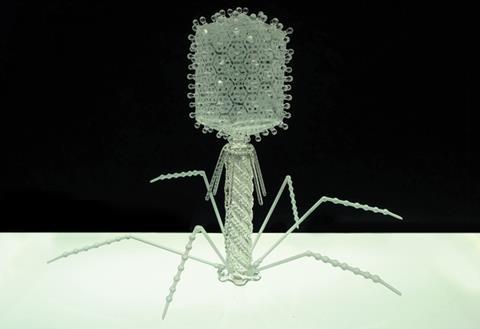
As a colour-blind A-level student, Luke Jerram looked set for a degree in engineering despite taking art alongside maths and physics. And though he changed course, ‘how the world works’ remains an underlying inspiration for his sculpture, installations and live art projects. Influenced by his colour-blindness, many of these projects also explore how we see the world. For example, his glass sculptures of bacteria and viruses highlight the fact that they’re colourless, because they’re smaller than the wavelength of light. Jerram’s transparent sculptures therefore consider how the artificial colouring of scientific microbiological imagery affects how we understand them.
Jerram, based in Bristol in the UK, also takes great pains to make his depictions as faithful as possible. ‘I take advice from virologists and biologists, and I build teams of people to bring these artworks into being,’ he says. ‘I’m working with scientific glassblowers to make these artworks as accurate as they can be within the limits of contemporary glassblowing, but also within the limits of scientific knowledge. Over the past 10 years, the understanding of viruses has improved dramatically and all the images have got more and more accurate. I’m having to develop and change my glass models accordingly.’
You might think that there’s little more scientific than a virus, but Jerram stresses that even his close representations can still be art. ‘Scientists don’t own viruses – they don’t have a monopoly on the stars,’ he stresses. ‘The stars are just there and we can look at them scientifically or you can look at them artistically. Sometimes people get that a bit confused. As soon as you start thinking about microbes, well that’s science, isn’t it? It’s not – microbes are there and we can think of them from a religious perspective, a scientific perspective, or an artistic perspective.’
Andy Extance is a science writer based in Exeter, UK
Read more from our chemistry and art theme issue













No comments yet